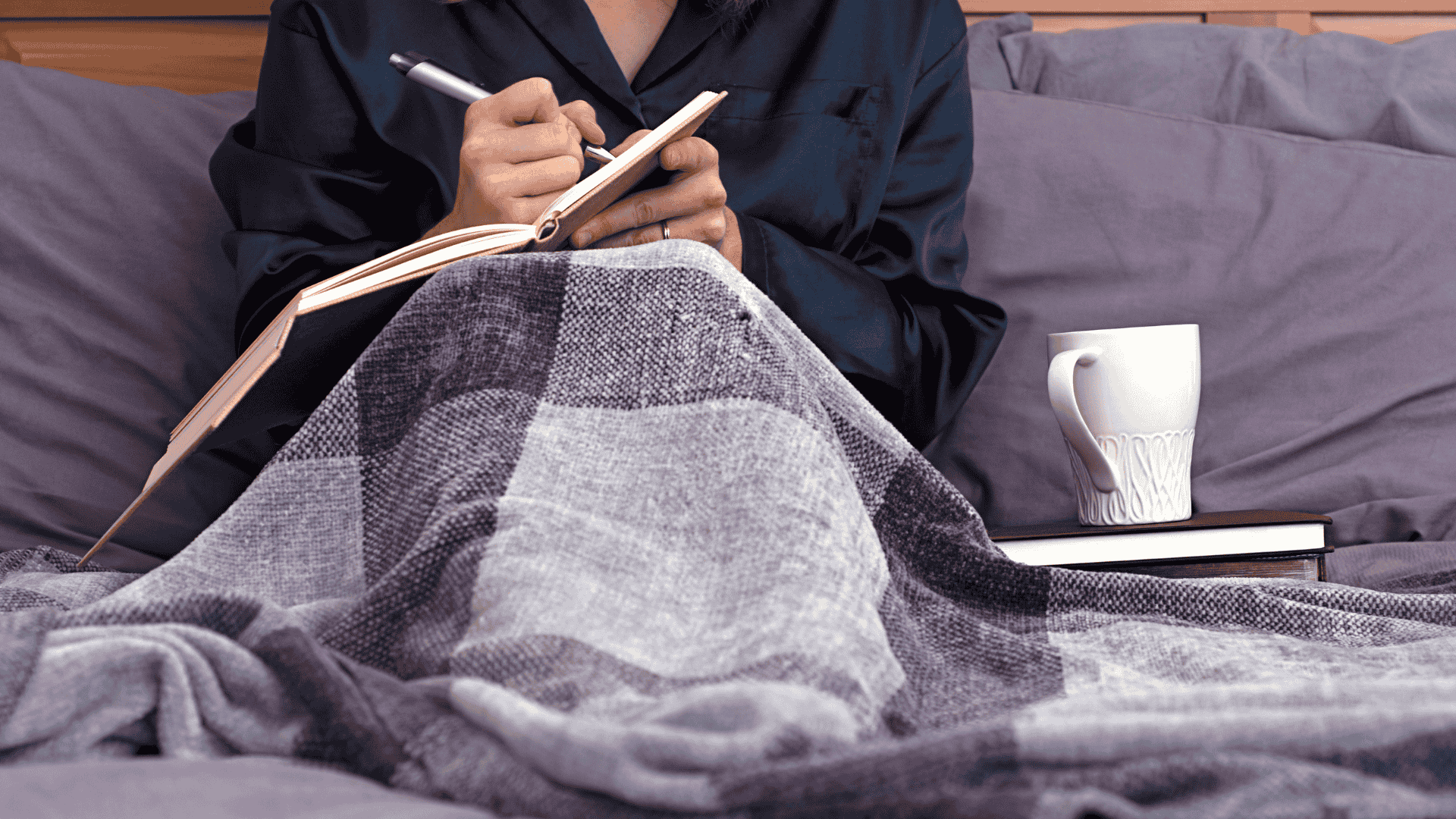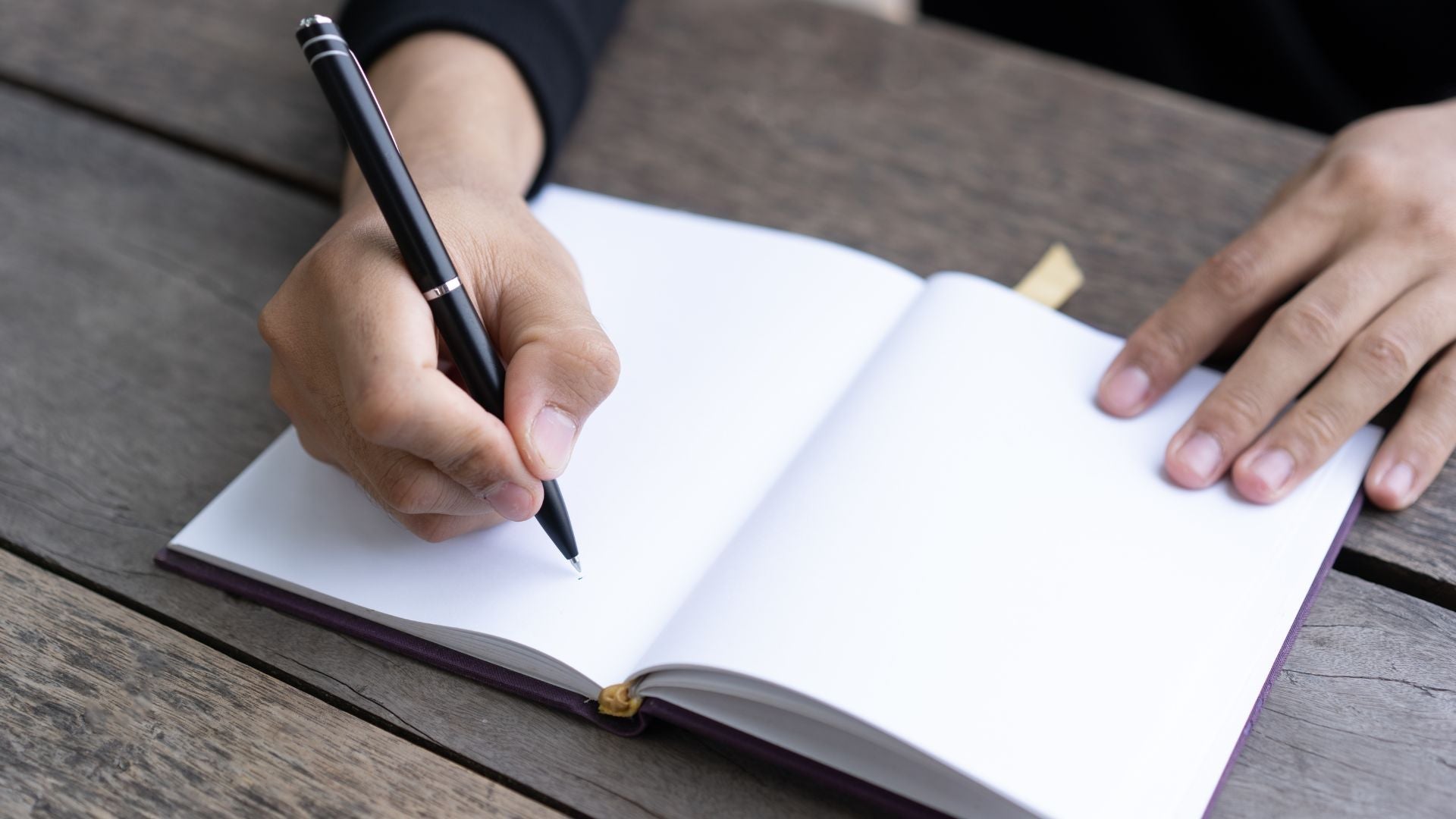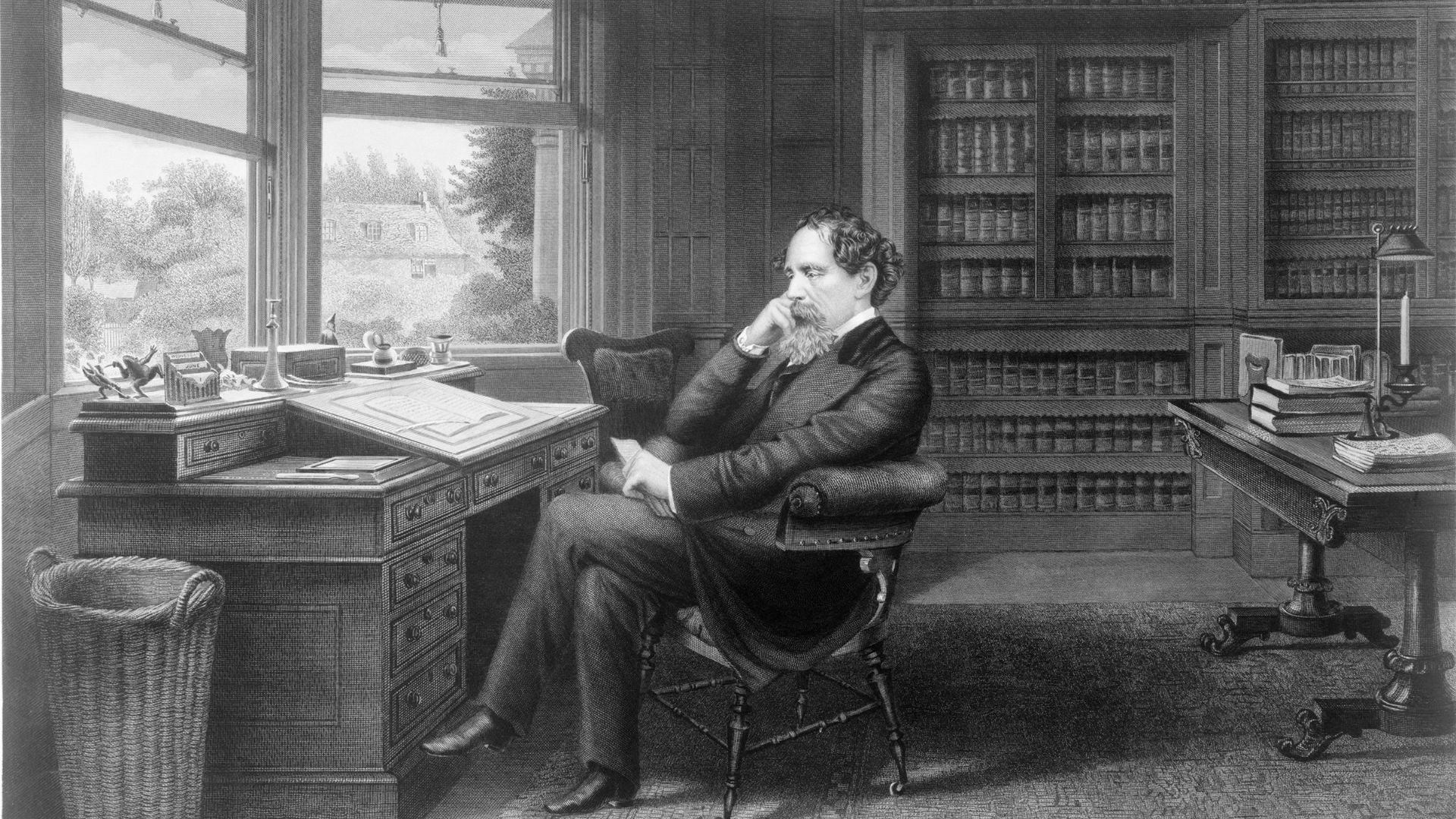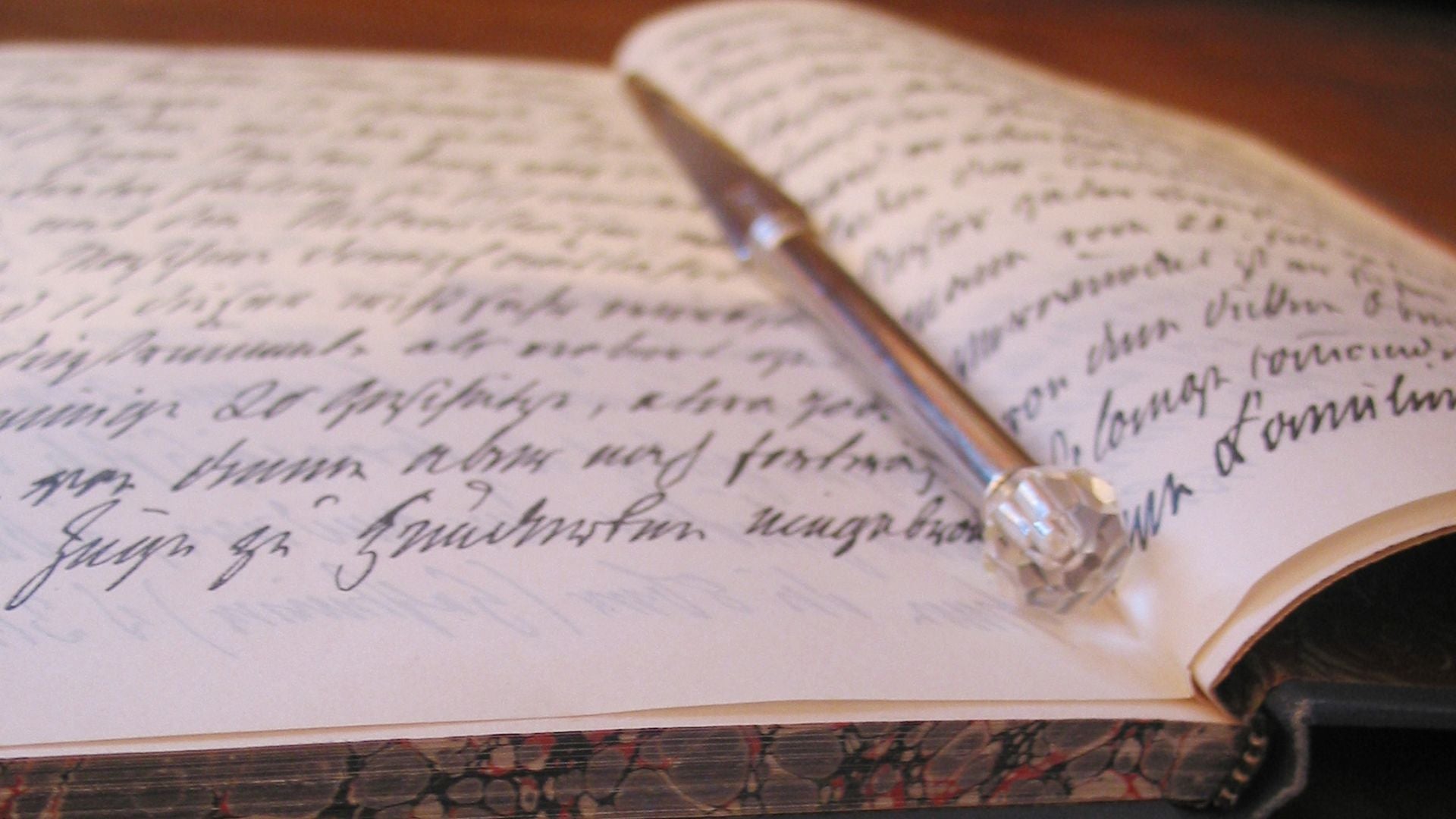Selecting the right pen - a guide for pen collectors and journalers
It is said that there is a tool for every task - the instrument that makes the job at hand that much easier, or more enjoyable, to perform. In our day to day lives, we use a multitude of gadgets and devices to get jobs done and it can be easy to look over one of the most seemingly basic of tools – the pen. At first glance, it can seem overwhelming to see the sheer volume of pens available on the market nowadays, but to those in the know, the subtle differences in pens are of utmost importance. But, do those differences affect your writing?
If you’re a pen aficionado, the answer is a resounding yes. We are firm believers that the style of pen you use can influence and help the type of journaling you’re looking to do. For those of us who are lovers of pens, the attention to detail must obviously extend to the right paper. Texture, weight, and color are just some of the criteria that determine which pen (or pen owner) are best suited to which paper. When the two elements come together just so, writing becomes more like a form of meditation.
We've all had those moments where you grab the nearest scrap of paper and any pen you can lay your hands upon. The pen often doesn't work, so you draw a swirly circle on the corner of your envelope, waiting for the ink to flow. When it finally does, you scribble a hasty note. This sort of paper-and-pen experience is, at its heart, utilitarian. At the other end of the spectrum, however, is the kind of relationship between pen and paper that is more like a dance than a scribble. Pen collecting is an appreciation of the nuances of this dance.
Collectors seek out pens with the perfect weight and shape, searching for the one that looks like art and balances in the hand like a surgical instrument. These beautiful pens then must deliver ink to paper with just the right line, be it thick or thin, with a feather-light touch or a deliberate stroke.
This mindful approach to putting words on paper is naturally suited to the thoughtful art of journaling. Writing by hand offers benefits similar to meditation, sparks important neural connections, and even feeds creativity. The right pen and paper can facilitate your connection to the writing process and all it has to offer you.
If all of this sounds a little complicated, well, it can be. But isn't love always complicated?
What Makes a Pen the Right One?
Connecting with other pen lovers can be a wonderful way to explore your habit. There are national publications devoted to all things pen, such as Pen World, in continuous publication for over 30 years! The have a glossy print magazine that covers new and vintage pens and accessories, plus long-form features on leading brands and manufacturers, and profiles of the makers and collectors who compose the pen community. It’s published every other month and is available on many Barnes and Noble newsstands or in local pen shops as well as via subscription. At their website, Penworld.com you can subscribe to their digital journal, and there’s also a cool calendar to keep track of events such as pen shows and auctions. Pen Collectors of America is a non-profit online club that is run by pen collectors. Membership will not only connect you with other pen aficionados, but you will also receive their journal, printed three times a year. If you would rather connect with pen lovers in your community, there are many small clubs found all over the country. Local pen shows are a great way to make connections with these clubs.

Finding the best pen for you is a very objective thing. When I sold my first article, my husband bought me an exquisite pen that he had engraved with a lovely sentiment. Unfortunately, the body of the pen is just a bit large to sit comfortably in my fingers, and it weighs too much for me to write comfortably with it for very long. Although I loved the gift, it sits in a drawer. It's simply not the right pen for me.
Similarly, the best pen is not necessarily the most expensive one. Each type of pen has wildly different price points. You can spend hundreds of dollars on an antique fountain pen, but you can also get a good one for $5 - and each end of the spectrum offers unique benefits.
Of course, you may have found that there is more than one perfect pen, depending on how it will be used, especially in a leather journal. Are you dashing off quick thoughts or is your writing style slower and more deliberate? Perhaps your journal is focused on pictures and colors more than words? You may not know yet what you want to say, but it's worth it to consider how you want to say it.
For each perfect pen, you'll want to find the right paper for it. There's no right or wrong here, but different papers have different qualities. The paper that works best with your pen will depend on what you're creating and how you want the writing (or drawing) experience to feel and look.
A Look at Pens and the Types of Paper That Love Them
Fountain Pens
This is the classic collectible pen.

An interesting benefit of fountain pens is that they require no downward pressure for the ink to flow onto the paper. For some people who tend to grip their pens, causing their hands to tire quickly or cramp up, the gentle stroke of a fountain pen can help them relax their fingers. Particularly for journaling, this physical relaxation can help foster an emotional openness, making it easier to express feelings.
The weightless stroke of a fountain pen glides most easily over smooth paper. Highly textured paper, such as handmade, makes it more difficult to write straight and even lines with a fountain pen. A high-quality paper will reduce the chances of the free-flowing ink spreading out ("feathering") or bleeding through the paper.
Rollerball Pens
Also known as liquid ink pens, rollerball pens have smaller tips, 0.5 to 0.8 mm. This doesn't result in a very fine line, however, because the thin ink spreads a bit on the page. They require less downward pressure than a standard ballpoint pen because the ink flows more freely.
Because of the thin ink, you will feel the texture of the paper as you write more. You might like feeling the slight rumble of textured paper under your pen, or prefer the silken feel of smooth paper. Be sure your paper is fairly absorbent, especially if you're left-handed because the liquid ink can smear otherwise.
Brush Pens
These are not the pens you want for traditional journaling. However, if you're the visual sort who likes to journal in pictures or you add colors to your text, brush pens can open up a whole world of watercolor-like effects. They create more intense lines than traditional watercolors, and so they're good for detailed work. Brush pens with firm tips are easier to control, and probably a good place to start. However, they don't provide the variation in line size that you'll get with softer tips. You can also experiment to see if you prefer bristle tips, which are most like brushes, or felt tips, which are like flexible markers and easier to control.
Brush pens can feel a little slippery on smooth paper. Handmade paper gives drawings a lively texture, but it's a little harder on felt-tip brush pens. Experimentation will give you an idea of which you prefer. A heavier weight paper will stand up better to the water content of these colors.
These categories only scratch the surface of all the pens that are available to you. No matter what type of journaler or writer you are, we are confident we can help you find the perfect journal to house your thoughts, dreams, musing, and art. Perhaps you’re a lover of our timeless Classico collection – the hallmark of elegance. Or, for more playful and vibrant colors in patterned suede leather, check out the Modello collection. Whatever your style or preference, you are sure to find a finely handcrafted journal as a perfect companion to your preferred writing instrument.
Kira Martin is a freelance writer living in the beautiful state of Colorado. She is passionate about words and science, and loves how writing requires her to learn something new every day.This is Kira’s 2nd contribution to Epica; read her other article - Keeping Things in my Little Notebook. If you would like to contribute to our growing collection of informative blog posts, please contact us at info@epica.com








